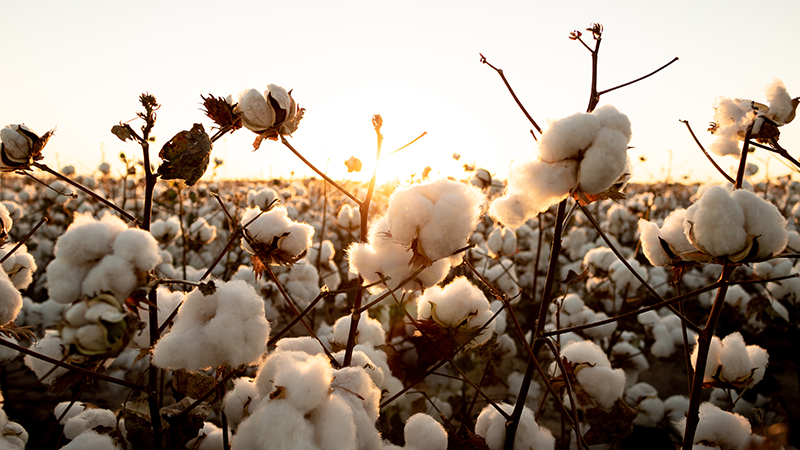Is California’s Pima Cotton Industry in Danger of Drying Up?
The prospect of more frequent or prolonged droughts in the future, combined with additional regulation on water use, stand to challenge California’s Pima Cotton industry.
According to a new report from CoBank’s Knowledge Exchange Division, reduced Pima cotton production in the U.S. will result in lost market share to other premium cotton exporters, including Egypt and Peru, plus higher costs for U.S cotton gins and premium textile supply chains.
“More restrictive regulations on water use or higher costs for water will likely result in a sharp decrease in Pima cotton acreage in California,” said Ben Laine, senior economist, CoBank. “During limited periods of drought, cotton fields may be fallowed or temporarily switched to vegetables. However, the prospect of long-term water availability changes will result in a longer-term recalculation for growers. This could cause investments to shift to permanent crops and a sustained decrease in cotton acres.”
California’s Specialty Cotton Crop
American Pima cotton is an extra-long staple cotton grown primarily in California, and is used in premium textiles such as high-end clothing and bedding. Pima cotton growers earn a premium price compared to short-staple varieties like upland cotton, which makes up the majority of cotton grown in the U.S.
Cotton growers in California have the distinct advantage of a favorable growing climate for Pima cotton, but they face increasing challenges around water availability. While most cotton across the U.S. Cotton Belt is grown under non-irrigated conditions, Pima cotton grown in California typically relies on irrigation.
Water and Crop Profit Margin
In response to long-term water management concerns, three bills collectively known as the Sustainable Groundwater Management Act were passed by the California state legislature and signed into law in 2014. By 2020, plans will need to be in place to regionally manage and regulate water usage to reduce groundwater use to sustainable levels by 2040.
While many of the details of how these regulations will be implemented are still unknown, they will begin having an impact on the California’s agricultural sector within the next few years. If water costs increase or availability decreases, cotton acreage is sure to decrease.
“The incentive to switch from cotton to another crop is not a matter of reduced water use,” said Laine. “Rather, it is a matter of the profit margin earned per unit of water. Other options like permanent crops and canning tomatoes may use similar amounts of water, but return higher levels of profit.”
The decision to switch to alternative crops is not always as simple as planting different seeds. Many of the specialty crops grown in California – particularly permanent tree nut crops and grapes – require very different management, labor requirements and equipment. While a drought for a limited time may present incentives to switch to other row crops or fallow a field temporarily, a long-term regulatory change could shift incentives toward permanent crop investments.
Ranging Potential Impacts
If buyers of Pima cotton find themselves unable to source raw cotton, they will need to either pay more to return a high enough premium for growers to justify continuing to grow the crop, or they will need to source alternative cottons.
If the number of gins is reduced due to lower production, the remaining cotton producers will likely face lower returns in the form of higher transportation costs to the gins that remain. The higher transportation costs could further strain growers and perpetuate additional cotton acreage losses.
A by-product of cotton fiber is the cottonseed, which is removed during the ginning process and most commonly makes its way into the feed ration of dairy cows. Any decrease in the availability of cottonseed will have spillover effects on the feed costs faced by California dairy farmers if they need to ship in cottonseed from farther away states like Texas.
“In the face of continued water use limitations, some growers will opt to switch from cotton to other crops, including permanent crops like tree nuts and grapes,” said Laine. “The decline in local production will raise costs on gins that will increasingly rely on imports. Buyers of textiles made with Pima cotton may begin to source premium cottons from other regions, and the U.S. Pima industry could lose substantial market share to competitors, as well as face substitution from synthetics.”
A video synopsis and the full report, “Challenges Ahead for California Pima Cotton,” are available online.
Based on information provided by CoBank.









